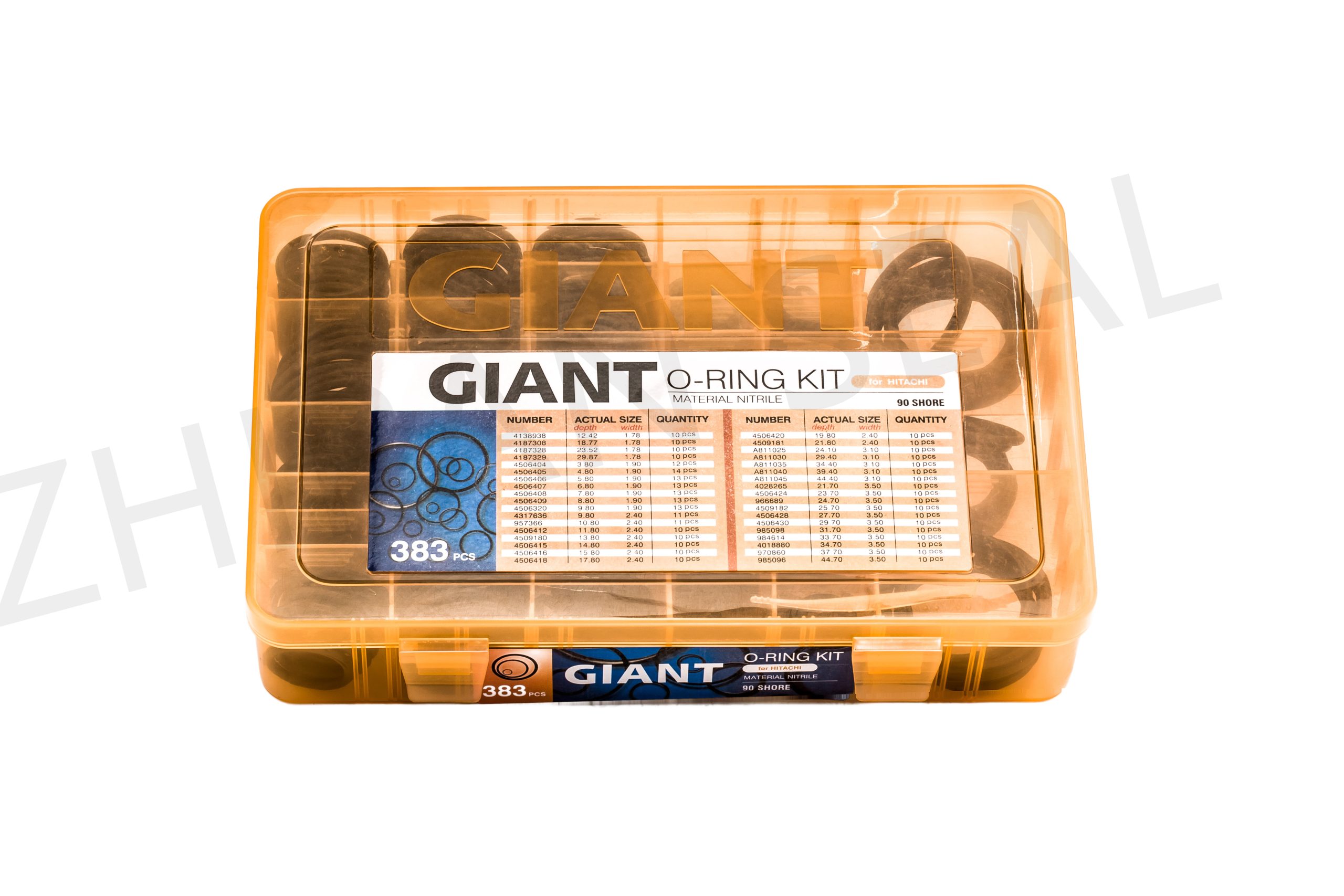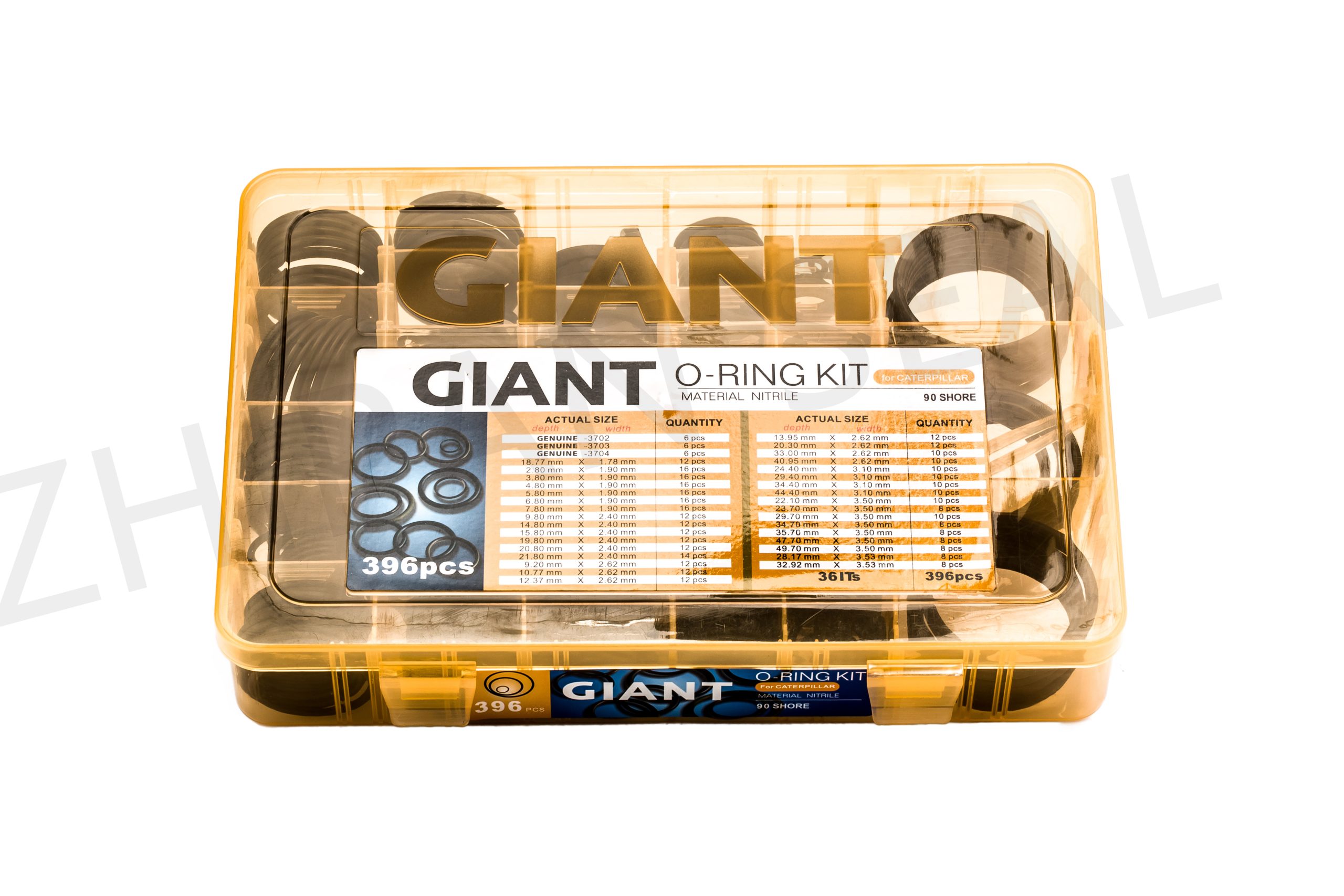Big-O-Ring BOX
Material : NBR/VITON
Application: Cylinder
Type: O-RING
Performance: High Temperature,High Pressure
MOQ: 10 boxes
Package: Plastic box
Description
A rubber O ring is a mechanical gasket in the shape of a torus or donut and is used for static and dynamic applications where there is relative motion between parts and the possibility of friction. Some of the benefits of rubber O rings are how easy they are to manufacture, their low cost, reliability, pressure resistance, and ease of mounting. They are made from different types of rubber that include nitrile, viton, silicone, and several other synthetic rubber materials.
Rubber O Ring Materials
Nitrile Rubber (NBR or Buna-N)
Nitrile is a synthetic rubber composed of acrylonitrile (ACN) and butadiene. The performance and applications for NBR vary according to how ACN and butadiene are combined. With a low ACN content, the rubber has a lower glass transition temperature. A higher ACN content creates resistance to certain types of solvents. Nitriles are popular for their excellent working properties and cost.
The wide use of nitrile elastomers, aside from their low cost, is due to their low compression set, high abrasion resistance, and superior tensile strength. NBR O rings have an operating temperature of – 40o C up to 120o C.
Viton® (FKM) Material
Viton is a fluoropolymer elastomer and synthetic rubber compound that was developed by DuPont. It is a fluorinated hydrocarbon rubber designed to withstand challenging and harsh conditions. There are different grades of Viton, such as A grade that has 66% fluorine and is commonly used for O rings.
“A” grade Viton O rings are more expensive than nitrile ones because Viton has a wider temperature range, better resistance to degradation from weather, ozone, and resistance to chemicals. The extended service life of Viton reduces service and maintenance calls while providing highly reliable sealing. These factors make an investment in Viton less expensive and cost saving.
Viton O rings can withstand temperatures ranging from – 20° C up to 210° C and can withstand the effects of chemicals, oils, acids, silicone fluids, and gasses such as halogenated and aromatic hydrocarbons. They maintain a tight resilient seal in the presence of oxidation, ultraviolet (UV) exposure, fungus, and mold.










